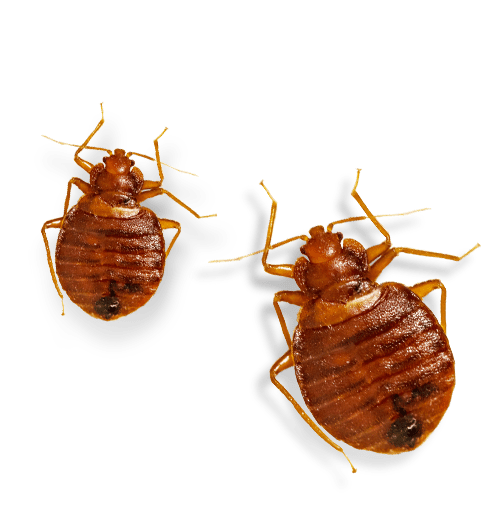Comprehensive A1 Bed Bug Extermination in Houston Location
Comprehensive A1 Bed Bug Extermination in Houston Location
Blog Article
Comprehending the Lifecycle of Bugs for Targeted Control Techniques
Recognizing the lifecycle of pests is a basic aspect of efficient insect monitoring approaches. Via a much deeper understanding of how parasites prosper and develop, tailored control methods can be created to address specific points in their lifecycle, eventually leading to more effective pest administration results.
Value of Recognizing Bug Lifecycle
Comprehending the lifecycle of bugs is essential for creating efficient and targeted control techniques in pest monitoring. By comprehending the different phases an insect undergoes from egg to adult, insect control professionals can identify weak spots in the lifecycle where intervention can be most successful. As an example, recognizing when larvae are most energetic can help figure out the optimal timing for using larvicides. Furthermore, understanding the life-span of a pest types can assist in anticipating population growth patterns and possible problem dangers.
Moreover, acknowledging the details environmental problems necessary for each stage of the bug's lifecycle can lead choices on environment adjustment or exemption methods to minimize and interfere with the lifecycle insect populations. This expertise allows pest management specialists to apply positive actions rather than relying entirely on reactive therapies, causing more lasting and sustainable bug control remedies. Inevitably, a comprehensive understanding of insect lifecycles empowers pest control experts to tailor their strategies effectively, taking full advantage of and reducing ecological effects control outcomes.
Key Stages in Parasite Growth
To effectively apply targeted control approaches in pest management, an essential element depends on thoroughly identifying and recognizing the essential phases in pest advancement. Insect growth usually contains a number of vital stages that are critical for their lifecycle and management. The very first phase is the egg phase, where pests lay eggs that later hatch right into larvae. Larvae then proceed right into pupae, a stage where they undergo metamorphosis prior to becoming adult pests. Understanding these phases is vital as it aids in identifying vulnerable points in the lifecycle where control actions can be most efficient.

Susceptabilities in Bug Lifecycle
Throughout the numerous phases of a bug's lifecycle, unique susceptabilities arise that can be purposefully targeted for reliable control measures. One critical susceptability exists in the egg phase, where bugs are usually much more susceptible to certain pesticides or organic control agents due to their soft outer shell, making them easier targets for intervention. Furthermore, the larval or nymph phase offers vulnerabilities as insects undergo rapid development and growth, calling for high energy usage that can be exploited by interrupting their food resources or presenting growth preventions. Pupal phases, identified by immobility and improvement, use a window for targeted control with physical obstacles or particular therapies that prevent effective appearance. Ultimately, adult parasites, while extra durable i loved this due to their reproductive capability, can still be at risk throughout mating or egg-laying navigate here tasks, which can be interrupted through scent traps or sanitation techniques. Comprehending these vulnerabilities in the bug lifecycle is essential for establishing exact and effective control methods that successfully handle insect populaces while minimizing environmental effect.
Carrying Out Targeted Control Measures

Executing targeted control procedures normally involves a multi-faceted technique. This may include environment adjustment to make the setting less hospitable to insects, such as removing standing water for mosquito control or sealing entry points for rodents. Furthermore, biological control approaches can be utilized, where all-natural predators or pathogens are presented to keep bug populaces in check.
Chemical control, such as the careful application of chemicals, is one more common approach. Nevertheless, it is vital to utilize these materials sensibly to minimize ecological effect and possible damage to non-target species. Integrated Insect Management (IPM) approaches that integrate various control actions in a worked with and lasting way are usually the most reliable in accomplishing long-term pest monitoring goals. By applying targeted control actions based upon a detailed understanding of bug lifecycles, insect populations can be effectively managed while decreasing risks to human health and the environment.
Boosted Parasite Management Practices

In addition, the unification of organic control agents, such as all-natural predators or microorganisms view of pests, can assist minimize reliance on chemical pesticides and promote a more balanced environment. Executing physical barriers and catches can additionally be part of improved insect monitoring methods, using non-toxic and targeted services for pest control. Additionally, making use of pheromones and various other semiochemicals can interfere with pest breeding patterns and communication, leading to decreased parasite populaces gradually.
Verdict
By identifying crucial phases in bug development and vulnerabilities in their lifecycle, targeted control procedures can be applied to reduce insect populaces. Improved insect monitoring methods can help minimize the dependence on broad-spectrum chemicals and promote more eco pleasant and sustainable bug control methods.
Understanding the lifecycle of parasites is crucial for developing effective and targeted control techniques in parasite administration. By understanding the various phases a parasite goes with from egg to grownup, pest control specialists can identify prone factors in the lifecycle where intervention can be most successful. Inevitably, a comprehensive understanding of bug lifecycles empowers parasite control practitioners to customize their techniques successfully, making best use of and decreasing environmental effects control results.
By applying targeted control steps based on a complete understanding of parasite lifecycles, parasite populations can be effectively regulated while minimizing risks to human health and the environment.
By recognizing crucial stages in parasite advancement and vulnerabilities in their lifecycle, targeted control actions can be executed to decrease parasite populaces.
Report this page